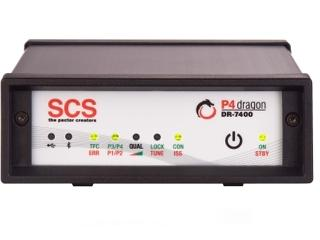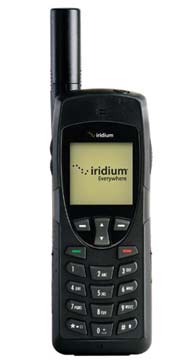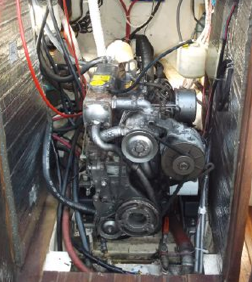One of our most popular blog posts is a discussion of HF Radio vs. Satellite Phones.
The information is still solid (and the conclusions the same), but more than a year and a half have passed since we wrote that blog post, and we thought the subject could benefit from a refresher.
This is because we still get calls, not infrequently, saying, "Yeah, yeah, yeah, satellite. But HF Radio is free!"
Is it? Let's look.
For the newbies out there, an HF Radio is a long range radio (also called single-side-band or SSB) that is used to connect cruisers to one another via voice, or back to shore through shore stations.
A satellite phone or terminal is a phone that connects to a satellite to provide communication in places that don't have cell reception. In order to receive and make calls, you need a satellite phone or terminal and airtime.
(Note: GMN no longer sells HF radio hardware, so all prices here are an approximation of current market prices after internet searching each piece of equipment).

In order to get a HF radio set up you need the following:
So the hardware cost alone is almost $5,000. You can add in about a $1,000 more for installation.

Satellite phones range in price from $625 for an Inmarsat IsatPhone Pro to $16,000 for an Inmarsat Fleetbroadband 500 (and beyond - we're not talking about large-scale VSAT installations).
Our most popular handheld satellite phone is the Iridium 9555 which currently sells for $1,195.
Our most popular broadband satellite terminal is the Iridium Pilot, which currently sells for $4,495.
The portion of HF Radio that allows for data transmission is the Pactor Modem. If you compare the two pieces of equipment (pactor modem and handheld satellite phone), you'll see that getting a handheld is cheaper, possibly much cheaper, than the pactor modem.
In order to use satellite phones for more than SOS calls (which are free), you need to purchase airtime. To see a full discussion of the different type of airtime available, check out this blog post on prepaid satellite airtime vs postpaid satellite airtime.
A popular airtime plan for cruisers with Iridium phones, for example, is the 500 minute card with 1 year validity - currently $720.
HF radio is free.
In theory, yes. You don't pay any money to use the radio waves to do data. But there are hidden costs to doing data over HF radio. They are as follows:
In order to do email over HF radio, you need to either have a HAM radio license or subscribe to an email service. SailMail, a popular HF radio email service, is $250 a year and limits your connection to about 12 minutes of connection time a day.
In order to transmit or receive data over HF radio, you need to connect to a shore station. Once someone is connected to that station, no one else can connect. You have that channel for your use until you're done with it. Which is great if you're the one connected, but not so great when you're the one waiting, listing to the endless beeping of someone else's transmission, until they get off and you, and a hundred other people, frantically press the button to connect.
Let's say you've managed to connect to the shore station. Now you have to download a GRIB file. Let's say that GRIB file is only wind for the Caribbean including 12 forecasts every 6 hours for 3 days. This GRIB file is about 10 kb in size.
Over a Pactor Modem, with its nominal speeds of 1-5 kilobytes per minute (very variable, as there are numerous factors that influence SSB speeds including air propagation, speed, and sun spots), that 10 kb GRIB file will take 10-15 minutes to download.
Over an Iridium handheld phone that same GRIB file would take 1 minute to download.
 We're about to get technical, so bear with us.
We're about to get technical, so bear with us.
HF Radio consumes 30 Amps during a transmission, and 2 Amps just to listen. Compare that to an Iridium handheld which uses 0.4 Amps at all times.
A typical yacht charging system runs at 60 Amps with an 60-80% charging efficiency. This mans 40 Amps per hour of charging capacity.
That 10kb GRIB file, taking 10 minutes to download over HF (if we're lucky), means 5 Amps of power off the battery. With the charging efficiency on a typical yacht, we would be looking at 8 minutes to put that power back into the battery.
And filling the battery back up means running your engine. Average consumption is about a gallon of diesel an hour. At current rates of about $5 a gallon, the very real cost of downloading that GRIB file over your HF radio at $0.83.
That's under ideal conditions. If we throw a sun spot into the equation, we could safely guess that that GRIB file would cost $1 in diesel fuel.
So you could download a GRIB file over your HF radio in 10 minutes for about $1 or you could download a GRIB file over a handheld satellite phone in 1 minute for also about $1.
Our reasoning and experience is: if you are in the middle of a thunderstorm, not sure of where to go and what to do, the last thing you want to do is wait to connect to a shore station and then wait 10 minutes for your weather file to download. You want that information and you want it fast.
Although we got out of the HF radio business and cannot recommend strongly enough that satellite will meet your communication needs much better than SSB...we still love HF radio, and highly recommend it for cruisers.
That's because HF radio is excellent for ship-to-ship voice. It's excellent to keep in contact with cruisers around you, hear about the news on the water, listen to what is for sale, what country is having troubles, or even just where the best restaurant is at your next stop.
If you are going cruising, include HF radio as part of your startup costs (although you can omit the cost of the Pactor Modem), and get a satellite phone for your ship-to-shore communication needs.
That way, you can participate in the wonderful social circles amongst cruisers, but save yourself time and money with email, voice, and web at your fingertips.

